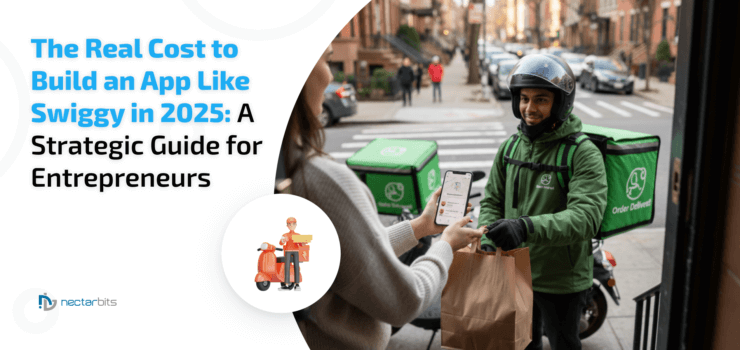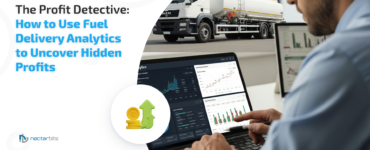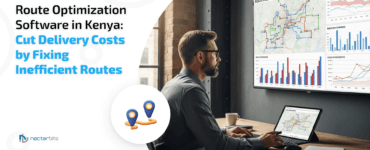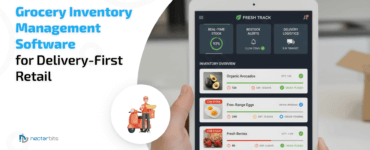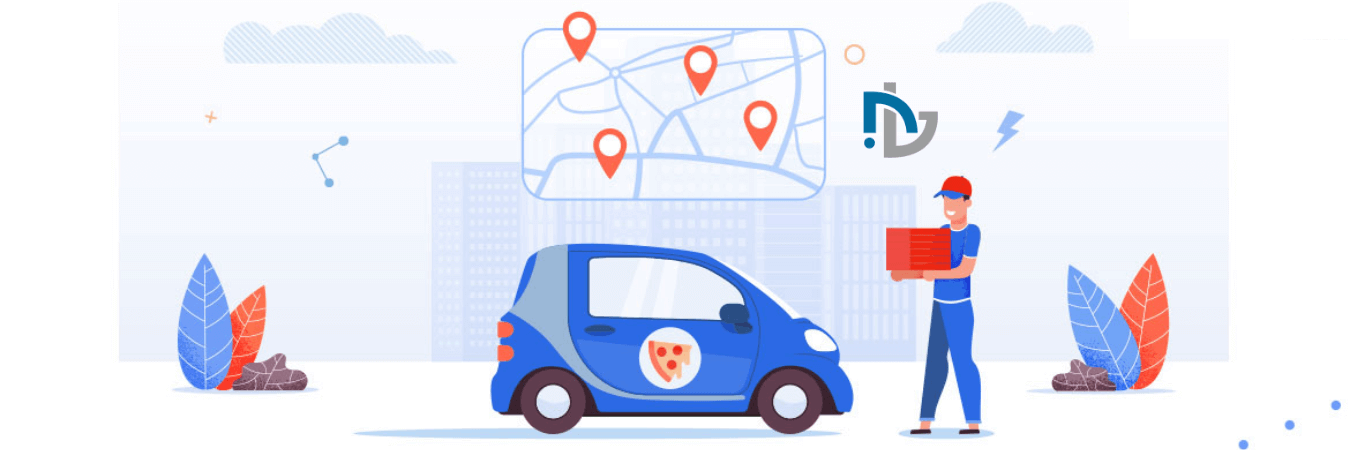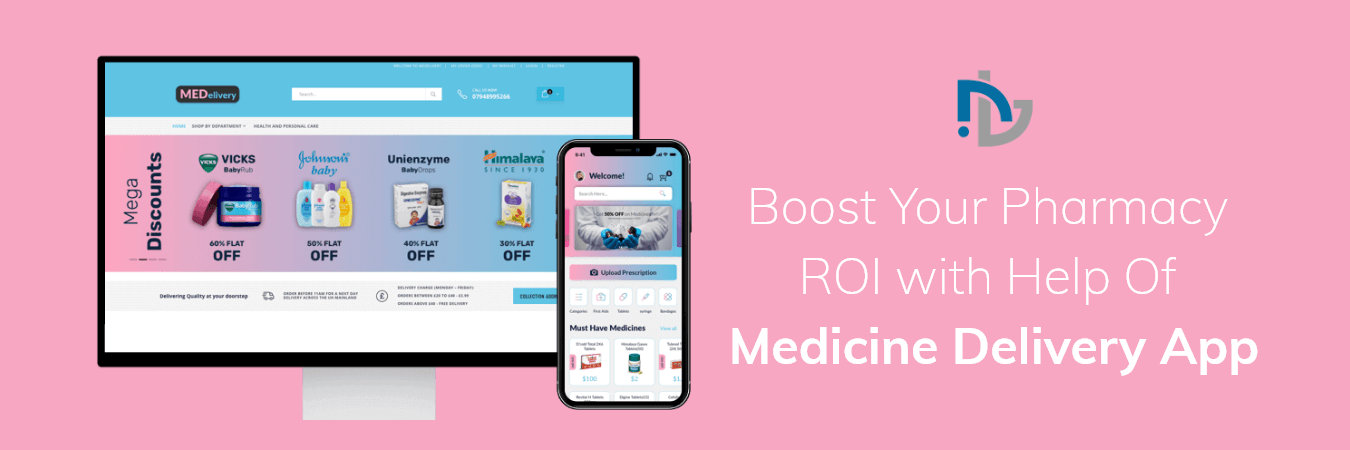The Real Cost to Build an App Like Swiggy in 2025: A Strategic Guide for Entrepreneurs
So, you’re looking to build the next Swiggy in 2025? You’re tapping into a market buzzing with opportunity. Entrepreneurs and businesses are no longer just creating food delivery apps; they’re engineering entire on-demand ecosystems. But launching an app with the ambition of Swiggy today is a world away from the landscape of five years ago. It’s not just about coding an app and hitting “launch.”
The modern user expects a seamless experience powered by real-time GPS tracking, one-tap payments, and eerily accurate AI-driven recommendations. The cost to create an app like Swiggy in 2025 is a direct reflection of this complexity, hinging on functionality, scalability, and how quickly you can dominate your target market.
This expert-backed guide breaks down the real costs involved, helping you make informed investment decisions as you step into the booming on-demand delivery space.
Future Predictions: The Explosive Growth and Evolution of the Food Delivery Industry
The food delivery industry is not just growing; it is undergoing a radical transformation driven by technology, changing consumer habits, and expanding business models. The numbers paint a clear picture of a sector rocketing towards an unprecedented scale. For anyone considering entering this market, understanding these future projections is critical.
Global Market Projections: A Trillion-Dollar Trajectory
The scale of the online food delivery market is staggering and shows no signs of slowing down.
According to the latest market research, the global online food delivery market is projected to reach a massive
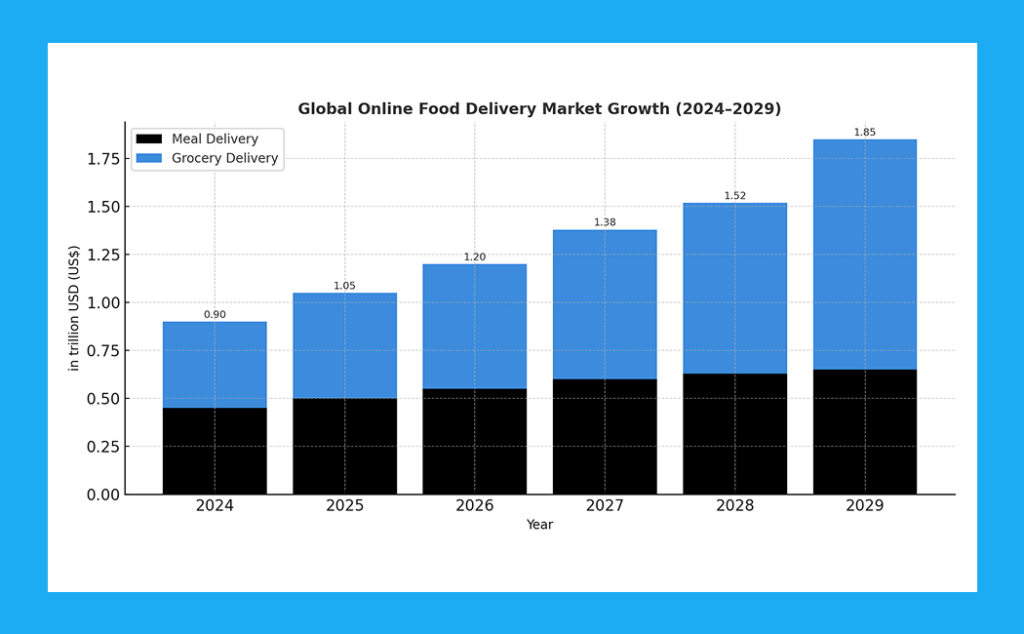
1.85 trillion by 2029. This sustained growth highlights the sector’s long-term viability and the massive opportunity for platforms that can innovate and capture market share.
While the global market is expanding, China is expected to be the single largest contributor, generating an estimated $450.50 billion in 2024 alone. This underscores the importance of regional dynamics and the immense potential in high-density, digitally-native markets.
The Rise of Quick Commerce and Grocery Delivery
The next frontier for growth is no longer just restaurant meals. The “quick commerce” or q-commerce model, which promises rapid delivery of groceries and essentials, is a key driver of the industry’s future.
- Grocery Delivery on the Rise: The Grocery Delivery segment is a powerhouse within the on-demand economy. By the end of 2024, consumer spending in this vertical is projected to hit approximately $0.77 trillion.
- Accelerated Growth in 2025: Platforms that have successfully integrated grocery delivery, like Glovo or Swiggy’s Instamart, are set to reap significant rewards. Projections for 2025 indicate that sales in the Grocery Delivery segment are expected to surge by a remarkable 20.0%. This rapid expansion signals a fundamental shift in consumer behavior, as households increasingly rely on apps for their daily needs. The competition in this space showcases the intensity of the market, with Blinkit Vs Zepto Vs Swiggy Instamart becoming a defining battle for quick commerce supremacy.
Key Trends Shaping the Future
Beyond the numbers, several key trends will define the next five years in food delivery:
- Hyper-Personalization with AI: Artificial intelligence will move beyond simple recommendations. Future platforms will use predictive analytics to anticipate user needs, offering personalized meal plans, automating grocery lists based on consumption patterns, and providing dynamic pricing based on real-time demand.
- Automation and Robotics: To meet the demand for speed and efficiency, the industry is expected to see increased adoption of automation. This includes “dark kitchens” run by robotic chefs and autonomous delivery vehicles (drones and sidewalk bots) for last-mile delivery, especially in urban centers.
- Sustainability as a Core Feature: Consumer demand for eco-friendly practices will force platforms to innovate. Expect to see an increase in features such as carbon footprint tracking for orders, options for reusable packaging, and optimized delivery routes that prioritize lower emissions.
- The “Super App” Consolidation: The most successful platforms will continue to evolve into “super apps,” integrating multiple services like food, groceries, pharmaceuticals, and courier services under a single, seamless interface. This not only increases customer lifetime value but also creates a powerful, defensible ecosystem.

Why is Everyone Still Building Delivery Apps in 2025?
The on-demand delivery market isn’t just growing; it’s accelerating in speed, innovation, and user expectations. The question for businesses in 2025 isn’t if they should launch a delivery app, but how they can get to market with a platform that can compete with giants like Swiggy.
The On-Demand Economy is a Juggernaut
The global online food delivery market alone is projected to soar past $200 billion by the end of 2025. When you factor in verticals like grocery (Swiggy Instamart), courier services (Swiggy Genie), and membership programs (Swiggy One), the market opportunity becomes colossal. Swiggy itself has demonstrated this, evolving from a food delivery platform into a comprehensive “hyperlocal convenience” provider. This multi-service model is where the real growth and profitability lie.
Today’s Users Demand a “Swiggy-Like” Experience
In 2025, customers expect more than just delivery. They demand:
- Real-time GPS tracking with pinpoint accuracy.
- AI-powered recommendations that know what they want before they do.
- Instant, one-tap payments and integrated wallets.
- Blazing-fast delivery, with services like Swiggy Instamart setting the bar at 10-15 minutes.
If your app can’t deliver this level of sophistication, users will churn. The standard has been set, and only intelligent, user-centric apps will survive.
AI is the Engine of Modern Logistics
A key driver of Swiggy’s success is its masterful use of AI. AI-powered route optimization is no longer a luxury; it’s essential for survival. It allows platforms to:
- Deliver more orders per hour.
- Drastically reduce fuel consumption.
- Save up to 15% on operational costs.
These AI tools are transforming last-mile delivery, making it more efficient and profitable. The Instacart Business Model has proven that success comes from multiple revenue streams beyond just delivery fees.
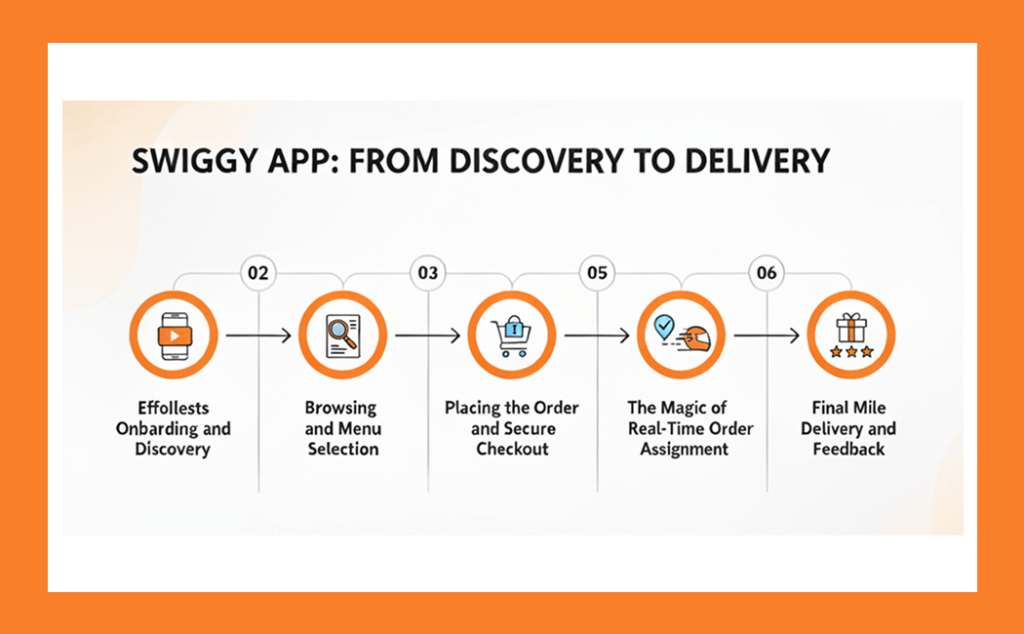
How Does a Swiggy App Work? The Anatomy of an Order
Before you can calculate the cost of building a food delivery app, it’s essential to understand the intricate process it involves. On the surface, the Swiggy app is a model of simplicity for the user. However, behind this effortless interface is a sophisticated, real-time logistics engine that coordinates between customers, restaurants, and delivery partners.
Here is a step-by-step breakdown of the Swiggy app’s working mechanism, from the moment a user feels hungry to the moment their food arrives.
Step 1: Effortless Onboarding and Discovery
- User Action: The journey begins when a user downloads the app and creates an account. This is typically a one-time process using a mobile number (verified via OTP for security) or social logins for convenience.
- Behind the Scenes: The app immediately requests location access. Using the device’s GPS, it fetches a curated list of restaurants available in the user’s specific geographic area. This list is not random; it’s dynamically sorted by algorithms based on factors like restaurant ratings, delivery time, users’ past order history, and promotional offers.
Step 2: Browsing and Menu Selection
- User Action: The user browses the list of restaurants, using filters (cuisine, price range, rating) and a search bar to find exactly what they’re looking for. Upon selecting a restaurant, they can view its digital menu, complete with dish names, detailed descriptions, prices, and high-quality images.
- Behind the Scenes: The menu data is not static. It is managed in real-time by the restaurant through its dedicated Vendor Panel. A restaurant owner can instantly update item availability, change prices, or add new dishes, ensuring the user is always viewing the most current offerings.
Step 3: Placing the Order and Secure Checkout
- User Action: The user adds desired items to their virtual cart. At checkout, they confirm their delivery address, can add specific instructions for the driver or restaurant, and apply any available coupon codes. Finally, they select a payment method.
- Behind the Scenes: This step involves crucial integrations. The app securely connects to multiple payment gateways to process transactions via credit/debit cards, UPI, and digital wallets. Once the payment is authorized, the order is officially placed and sent simultaneously to the restaurant and the delivery partner network.
Step 4: Order Confirmation and Assignment
- User Action: The user receives an instant notification confirming that their order has been placed and is being prepared by the restaurant.
- Behind the Scenes: The restaurant receives the order on its Vendor Panel and confirms it, providing an estimated preparation time. Swiggy’s algorithm then identifies the nearest and most suitable delivery partner and assigns them the order through their dedicated Driver App.
Step 5: The Magic of Real-Time Order Tracking
- User Action: This is the core of the user experience. The customer can open the app at any time to see the live status of their order—from “Order Confirmed” and “In the Kitchen” to “Out for Delivery.” They can see their delivery partner’s location on a map in real-time, along with an accurate Estimated Time of Arrival (ETA).
- Behind the Scenes: This is made possible by continuous communication between the three apps (Customer, Vendor, Driver) and Swiggy’s central server. The driver’s app uses the phone’s GPS to constantly send its location data to the server, which then pushes this information to the customer’s app, creating a seamless live tracking experience.
Step 6: Final Mile Delivery and Feedback
- User Action: The delivery partner arrives at the user’s location and hands over the order. The user can communicate with the partner via an in-app chat or call feature if needed. Once the delivery is complete, the app prompts the user to rate both the food/restaurant and the delivery experience.
- Behind the Scenes: The delivery partner marks the order as “Delivered” in their app. This final status update closes the order loop. The feedback provided by the user is then fed back into Swiggy’s algorithm to refine restaurant ratings and delivery partner scores, ensuring continuous quality control across the platform.
Types of Delivery Apps and Their Cost Differences
Before aiming for a complex app like Swiggy, it’s crucial to understand where it fits in the broader landscape. Costs vary significantly based on the business model.
| Type of App | Key Features | Basic Cost Range (USD) | Advanced Cost Range (USD) |
| Single Restaurant App | Simple menu, order management, and direct payments. | $10,000 – $20,000 | $20,000 – $35,000 |
| Local Food Aggregator | Multiple local restaurants, basic order & payment system. | $15,000 – $30,000 | $30,000 – $50,000 |
| Restaurant Aggregator (like early Swiggy/Zomato) | Multi-vendor, commissions, search/filters, ratings. | $30,000 – $60,000 | $60,000 – $100,000+ |
| On-Demand “Super App” (like modern Swiggy) | Food, grocery, parcels (multi-vertical), loyalty programs, advanced AI, and real-time optimization. | $60,000 – $100,000 | $100,000 – $250,000+ |
As you can see, a true Swiggy competitor falls into the “Super App” category, which demands the highest investment due to its multi-layered complexity.The most promising segment for new entrants is the Hyperlocal Grocery Delivery App category, which combines high order frequency with strong unit economics.
Clone Script vs. Custom Build – Which Is Better in 2025?
One of your first major decisions will be choosing between a ready-made “Swiggy clone” script and a fully custom-built application.
| Aspect | Clone Script | Custom Build from Scratch |
| Time to Market | 2–4 weeks | 6–9 months+ |
| Initial Cost | $5,000 – $15,000 | $50,000 – $150,000+ |
| Scalability | Moderate (May require significant rework to scale) | High (Built to handle growth from day one) |
| Customization | Limited (Bound by pre-set features and UI) | Unlimited (Every feature and workflow is tailored) |
| Ideal For | MVPs, local pilots, testing a market with a tight budget. | Funded startups and enterprises aiming for a unique, scalable, and defensible platform. |
In 2025, this choice is less about cost and more about ambition. A clone script gets you in the game, but you’re playing with a generic playbook. A custom build lets you write your own. If your goal is to truly compete, differentiate with unique features (like Swiggy did with Instamart), and own a proprietary tech stack that can evolve, a custom build isn’t a luxury—it’s a necessity.
Core Architecture of a Swiggy-Like App
To understand the cost, you must understand that you’re not building one app; you’re building four interconnected applications that work in perfect harmony.
- The Customer App: The user-facing interface for browsing, ordering, and tracking.
- The Delivery Partner App: The tool for drivers to accept orders, navigate, and manage their earnings.
- The Restaurant/Vendor Panel: The dashboard for restaurant owners to manage menus, accept orders, and track revenue.
- The Admin Panel: Your central command center to manage users, vendors, drivers, commissions, and view analytics.

Feature Breakdown and Associated Cost Impact
| Feature/Module | Estimated Cost (USD) | Why It’s Crucial for a Swiggy-Like App |
| UI/UX Design | $4,000 – $12,000 | Swiggy’s intuitive design is key to its high user retention. |
| Core Ordering & Profile Management | $10,000 – $20,000 | Non-negotiable basics: user signup, profiles, restaurant listings, cart, and checkout. |
| Real-Time GPS Tracking & Route Optimization | $5,000 – $15,000 | The heart of the delivery experience involves APIs and complex logic. |
| Payment Gateway & Wallet Integration | $4,000 – $10,000 | Multiple payment options are essential. A dedicated in-app wallet adds complexity. |
| AI-Powered Recommendation Engine | $8,000 – $20,000+ | A key differentiator that learns from user behavior to drive sales. |
| Ratings, Reviews, and Support | $3,000 – $7,000 | Builds trust and provides valuable feedback. |
| Admin Dashboard & Analytics | $7,000 – $18,000 | The powerful backend needed to manage the entire ecosystem. |
| Push Notifications & Alerts | $2,000 – $5,000 | Essential for keeping all parties updated at every stage of the order. |
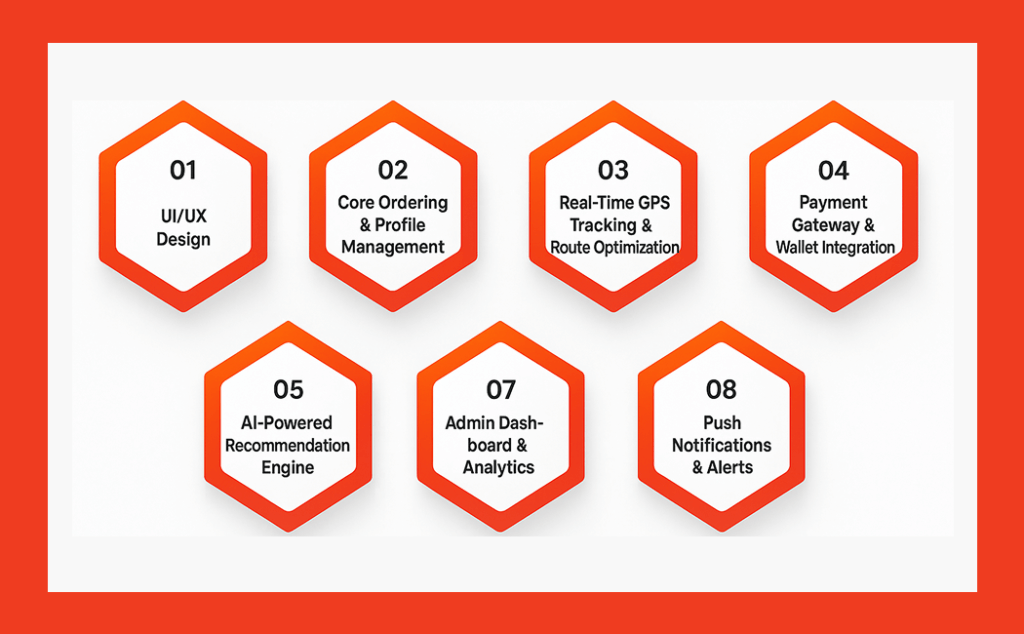
The Elephant in the Room: Post-Launch Costs
Launching the app is just the beginning. A significant portion of your budget must be allocated to post-launch activities to ensure your app remains functional, competitive, and secure.
Annual Maintenance Costs: Why It Matters
Never underestimate this. Budgeting for maintenance is budgeting for survival.
| Maintenance Area | Typical Annual Cost | What’s Included |
| Routine Maintenance | 15–20% of initial dev cost | Server monitoring, minor bug fixes, and OS compatibility updates for new iOS/Android versions. |
| Performance Monitoring | $1,000 – $3,000/year | Load balancing, crash reporting, and database optimization to prevent slowdowns. |
| App Store Compliance | $500 – $1,500/year | Updating SDKs and adhering to changing App Store and Play Store policies to avoid being delisted. |
Cost of Adding New Features Later
Your app must evolve. Adding a major feature is a mini-project in itself.
| Feature Type | Estimated Cost Range (USD) |
| In-app Chat Integration | $2,000 – $5,000 |
| Loyalty/Referral Program | $3,000 – $8,000 |
| Adding a New Vertical (like Instamart) | $25,000 – $60,000+ |
Unexpected Costs to Be Aware Of
| Unexpected Cost | Estimated Impact | Reason |
| Third-party APIs | $50 – $500+/month | Fees for maps, SMS, and payment gateways are usage-based and will grow with your user base. |
| Major OS Updates | $1,000 – $3,000/update | A major iOS or Android release can sometimes require significant code changes to maintain compatibility. |
| Urgent Bug Fixes | $200 – $2,000+ per instance | Critical bugs that affect core functionality need immediate attention and can incur extra costs. |
Final Thoughts: What’s the Right Delivery App Budget for You?
There is no single price tag. Your ideal budget is a direct reflection of your business strategy and ambition. Use this guide to choose your path wisely.
| Business Stage | Recommended Approach | Go-Live Time | Estimated Cost (USD) | Why It Works |
| Bootstrapped Startup (Local Focus) | Ready-made Swiggy Clone Script | 2–4 weeks | $8,000 – $15,000 | Perfect for a Minimum Viable Product (MVP) to test a local market and attract initial funding. |
| Growing Brand (City-Wide) | Hybrid Model (Clone Base + Custom Features) | 4–8 weeks | $20,000 – $40,000 | Balances speed and cost, allowing you to add unique features and scale as your user base grows. |
| Enterprise (Nation-Wide Ambition) | Fully Custom Architecture | 8+ months | $70,000 – $150,000+ | The only path for building a highly scalable, secure, and unique platform that can truly compete with the likes of Swiggy. |
Ultimately, building an app like Swiggy is less about recreating its features and more about emulating its obsession with speed, convenience, and data-driven innovation. A well-planned budget is your first step toward turning that ambition into a market-leading reality.
Frequently Asked Questions
A basic delivery app can cost between $10,000 to
40,000∗∗.A complex, multi-feature, app-like Swiggy with custom AI, multiple panels, and robust infrastructure will cost anywhere from∗∗
70,000 to $150,000 or more, depending on the complexity and the development team’s location.
Building a platform with the full functionality of modern Swiggy or Zomato (including food delivery, grocery, loyalty programs, and advanced analytics) involves a significant investment. A realistic budget for a custom-built, enterprise-grade app starts at
70,000∗∗, and can easily exceed∗∗
150,000. The final cost depends on the depth of features, the complexity of the AI, and whether you build for both iOS and Android natively.
Yes, the delivery business can be highly profitable, but it’s a game of scale and efficiency. Profitability depends on optimizing operational costs (especially delivery fleet management), achieving a high volume of orders, and introducing high-margin verticals like quick commerce (Instamart) or subscription services (Swiggy One). Success hinges on smart logistics, strong partnerships with vendors, and a constant focus on customer retention.


